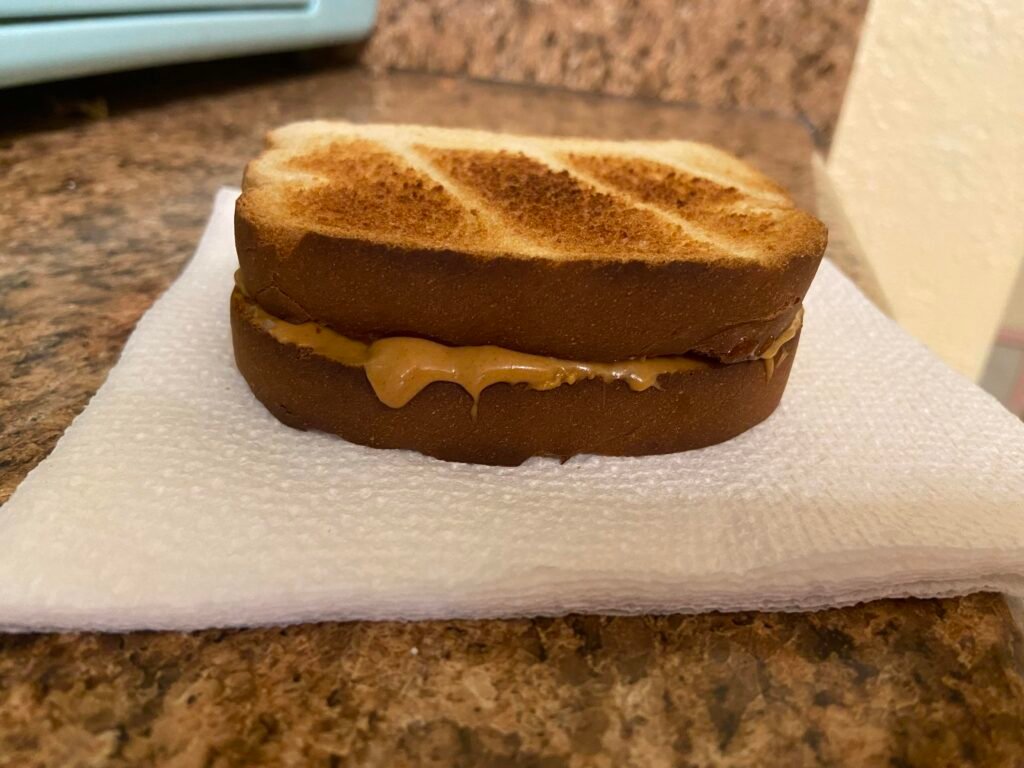PB and J calories might not be the first thing you think about when you bite into that nostalgic peanut butter and jelly sandwich. But if you’re watching your diet, counting calories, or just curious about what you’re putting in your body, it’s worth a closer look.
This classic American sandwich is known for its sweet and salty flavor combo, quick prep time, and ability to satisfy hunger in a pinch. But just how many calories are in a peanut butter and jelly sandwich? And can it still fit into a healthy diet?
Let’s break down everything you need to know about PB and J calories, nutrition facts, and how to make your sandwich healthier without sacrificing taste.
What’s in a Traditional PB and J Sandwich?

A standard peanut butter and jelly sandwich usually includes three simple ingredients:
- Two slices of white or wheat bread
- Two tablespoons of peanut butter
- One tablespoon of jelly or jam
Of course, the exact calorie count can vary based on the brands you use and how generous you are with the peanut butter or jelly.
Let’s break it down:
Calorie Breakdown (Average):
- Bread (2 slices of white or wheat): ~140–160 calories
- Peanut butter (2 tbsp): ~190–210 calories
- Jelly or jam (1 tbsp): ~50–60 calories
Total: Around 380–430 calories
That might not sound too bad—especially considering how filling it can be—but those calories can sneak up quickly if you use thicker bread or heap on the peanut butter.
Are PB and J Calories Healthy?

It depends. While a peanut butter and jelly sandwich is quick and tasty, its healthiness depends on how it’s made.
The Good:
- Peanut butter is rich in protein, healthy fats, and some fiber. It can help you stay full longer.
- Whole grain bread adds fiber and more nutrients compared to white bread.
- Fruit-based jelly or jam can add small amounts of antioxidants and vitamins (especially if it’s low-sugar or homemade).
The Not-So-Great:
- Many commercial peanut butters are high in added sugars and unhealthy oils.
- White bread offers little nutritional value.
- Jelly and jam are often loaded with sugar.
So while PB and J calories aren’t necessarily “bad,” the quality of the ingredients matters a lot.
Healthier PB and J Swaps to Reduce Calories
Want to enjoy your sandwich without going overboard on calories or sugar? Try these healthier swaps:
1. Choose Whole Grain or Low-Calorie Bread
- Swap white bread for whole wheat or multigrain.
- Try thin-sliced or low-calorie bread options (as low as 70–80 calories for 2 slices).
2. Use Natural Peanut Butter
- Look for peanut butter with just peanuts and maybe salt.
- Avoid options with added sugar, hydrogenated oils, or palm oil.
3. Go Light on the Jelly
- Use just a thin layer.
- Try fruit spreads with no added sugar or mash fresh fruit (like bananas or strawberries) instead.
4. Try Nut Butter Alternatives
- Almond butter and cashew butter are great options.
- Powdered peanut butter (like PB2) has fewer calories and less fat—just mix with water.
5. Add Extras for Nutrition
- Sprinkle chia seeds or flaxseeds for fiber and omega-3s.
- Add slices of banana or apple for natural sweetness and texture.
PB and J Calories for Different Variations
| Variation | Estimated Calories |
|---|---|
| Classic (white bread, regular PB, jelly) | 400–430 |
| Whole wheat bread, natural PB, low-sugar jelly | 350 |
| Low-calorie bread, powdered PB, fruit spread | 280–300 |
| Open-faced (1 slice bread, 1 tbsp PB, jelly) | 200–220 |
| PB and banana sandwich | 350–400 |
So as you can see, PB and J calories can vary widely depending on your choices. If you’re watching your intake, going lighter on the spreads or switching up the bread can make a big difference.
Can You Eat PB and J on a Diet?
Absolutely. If you make mindful choices, a peanut butter and jelly sandwich can be part of a healthy diet—especially when paired with other nutritious foods like fruits, veggies, or a glass of low-fat milk.
Here are a few tips:
- Watch portion sizes: One tablespoon of peanut butter is about 95–100 calories, so don’t go overboard.
- Choose nutrient-dense options: The better the ingredients, the more benefits you’ll get from the calories.
- Balance it out: If you’re eating PB and J for lunch, go lighter on other meals if you’re tracking total calories.
PB and J as Pre-Workout Fuel
Many athletes and gym-goers actually love PB and J as a pre-workout snack. It’s got:
- Carbs for energy
- Protein for muscle support
- Fats for sustained fuel
Just be sure to give it 60–90 minutes to digest before working out.
Fun PB and J Facts
- The average American will eat over 1,500 PB&J sandwiches by the time they finish high school.
- PB and J became popular during World War II as part of U.S. military rations.
- April 2nd is National Peanut Butter and Jelly Day in the U.S.
Final Thoughts
PB and J calories don’t have to be something to fear. When made with smart ingredients, this beloved sandwich can be a filling, affordable, and relatively healthy option—whether you’re a student, parent, or just craving a bite of comfort food.
It all comes down to portion control and smarter choices. So the next time you make a peanut butter and jelly sandwich, think about what’s going between the bread—and enjoy every bite with confidence.
Want a printable healthy PB&J recipe chart or suggestions for high-protein PB&J alternatives? Let me know and I’ll create it for you.
Also read – United States: Top 8 Culinary Tours for Food Lovers






